Every now and then, there’s a company that manages to take over an industry, despite its newcomer status and a decent playing field of competitors.
If you study the graphs associated with such companies, you’ll often find a specific moment when the customer base grew exponentially.
And a lot of the time, this inflection point is typically the point at which the business identified a viable ‘growth hack.’
An uncommon marketing tactic that usually allows an advantage to be had - like Dropbox’s referral loop or Airbnb’s Craigslist usage, growth hacking is often the reason many companies experience exponential growth.
However, a lot of people don’t really understand what growth hacking is or how the concept can be applied to their business.
Not to mention, “growth hacking” has become a shiny new word that a lot of businesses hope is a silver bullet to their marketing problems.
But as I sat down with Sean Ellis, the father of growth hacking (he founded GrowthHackers.com), on episode 18 of our marketing podcast, BoostSauce, he told us clearly what it is and what it isn’t.
We’ll also share an in-person interview I had with Sean Ellis at our Costa Mesa, CA HQ.
This post will provide you with an introduction to growth hacking, how it works, where it can be leveraged, and how the discipline can be used to its full potential IF executed correctly.
Get brand new marketing strategies straight to your inbox. 23,739 people already are!
1. What’s Growth Hacking?
Growth hacking is one of those buzzwords people throw around so much that it has now lost much of its original meaning.
Growth hacking is a process of rapidly experimenting with and implementing marketing and promotional strategies that are solely focused on efficient and rapid business growth.
Like I mentioned earlier, growth hacking is a concept first described by a Newport Beach gentleman named Sean Ellis, and according to him, a growth hacker is a person that focuses purely on growth.
[caption id="" align="aligncenter" width="590"] What’s a growth hacker? Sean explains[/caption]
What’s a growth hacker? Sean explains[/caption]Sean then expanded on the term by suggesting that a growth hacker is special because they adopt an entrepreneurial and scientific approach towards growing the customer base of a given product.
[caption id="" align="aligncenter" width="590"]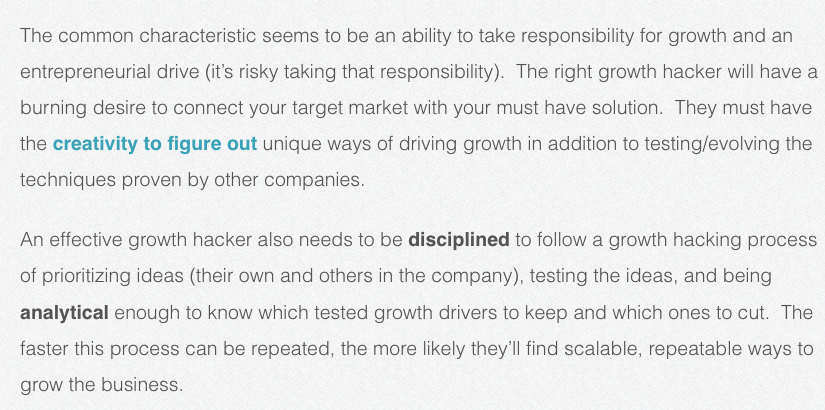
Basically, think of growth hacking as a mix of marketing, advertising, engineering, scientist, and data science.
I know, those are a LOT of hats to wear.
A growth hacker will list out hypotheses that might lead to growth, and they will then test these hypotheses while closely monitoring the data. If the data is inconclusive, they will move onto the next hypothesis, also known as the next test.
The interesting part is that growth hacking isn’t just reserved for marketing/advertising. It can be leveraged in the sales and customer support roles too.
This helps you quickly learn that the most successful growth hackers see growth hacking as a team sport by having as many cross-department people involved.
Growth hacking is then actually applying this methodology to a business so that it’ll grow rapidly in a short period of time.
How’s a Growth Hacker Different From a Traditional Marketer?
At this point, you might be wondering how a growth hacker is different from a traditional marketer.
Both are focused on “growth”, right?
This graphic below does a great job of highlighting some of the key differences between traditional marketers and growth hackers.
[caption id="" align="aligncenter" width="590"]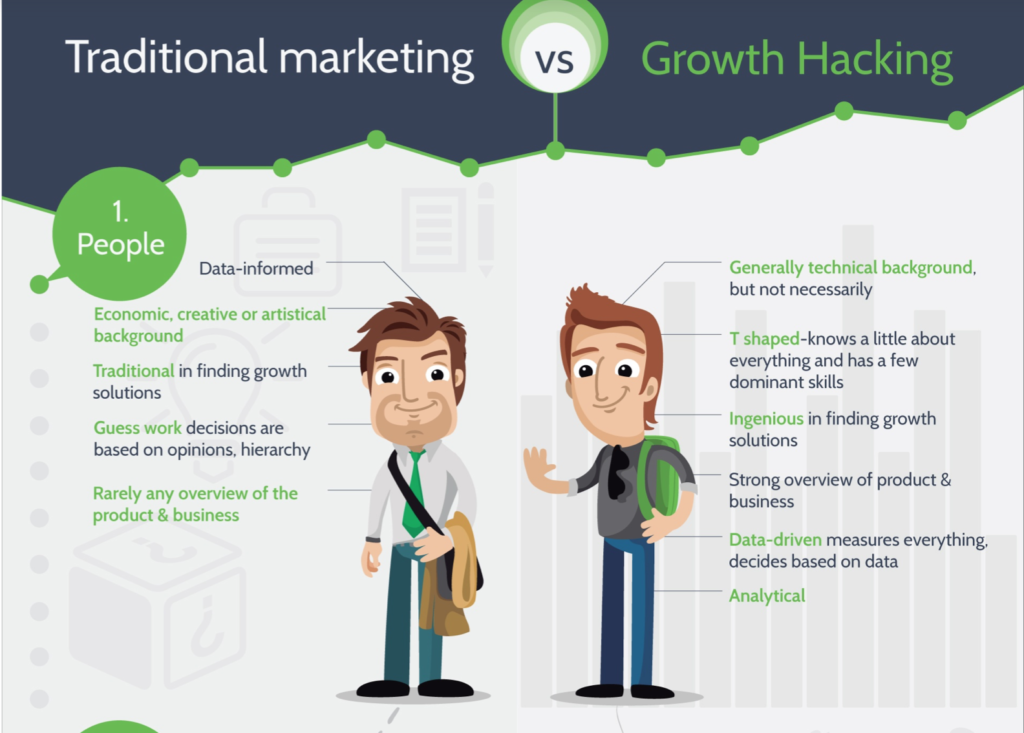 Traditional marketing vs. growth hacking[/caption]
Traditional marketing vs. growth hacking[/caption]One of the main differences between a growth hacker and a traditional marketer is that a growth hacker generally has a broader skill set. This broader skill set, if often referred to as a ‘t-shaped’ skill set.
[caption id="" align="aligncenter" width="590"]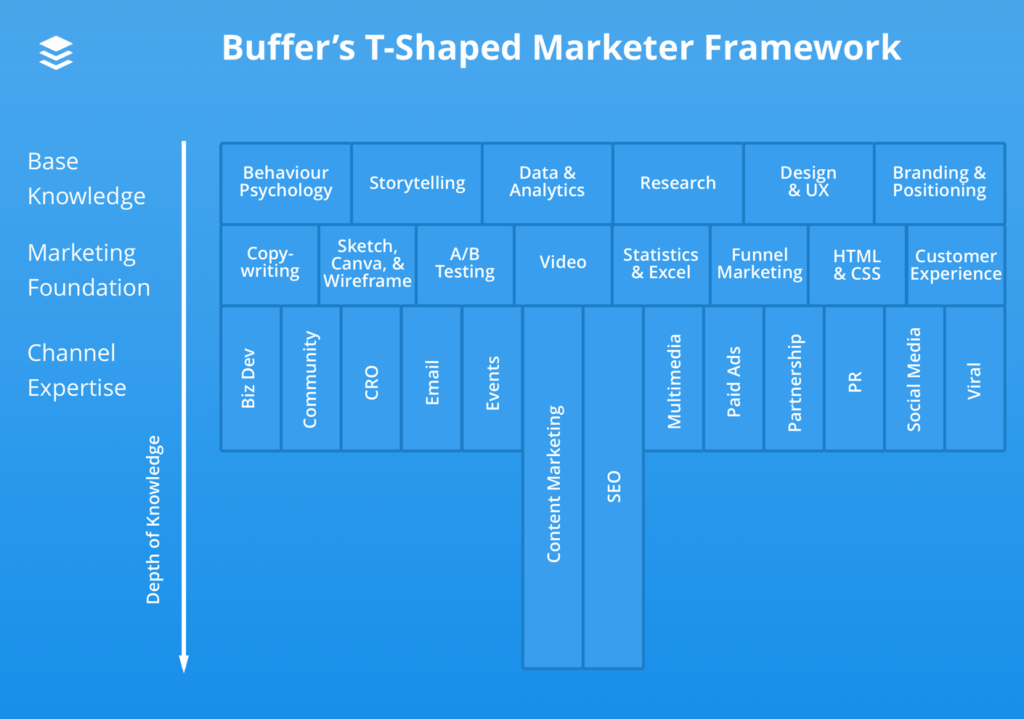 Buffer’s T-shaped marketer framework
Buffer’s T-shaped marketer frameworkSource[/caption]
When this broad, but general knowledge is combined with a data-driven approach, a growth hacker can achieve remarkable results.
That’s because their skill set allows them to test multiple marketing channels at the same time. Their data-driven approach means that they can quickly determine which marketing channel is producing the best results.
Their reliance on data, also means they’re able to work out how they can exploit a particular marketing channel so that it’ll produce even better results. A lot of the time, these ‘exploits’ tend to involve unique strategies that no one else is using.
This often results in a marketing strategy that is unique to the product/service being promoted, and this then allows for potential explosive growth.
A traditional marketer, though, will often use a relatively standard approach in regards to achieving growth.
They will rely on tried and tested marketed channels, and they won’t run rapid experiments to identify and then exploit the best marketing channel for a given product/service.
Additionally, a traditional marketer will also focus on things like “brand awareness” (just getting eyeballs on your messaging), which don’t produce a direct ROI in regards to growth.
The visual below does a good example of highlighting this, with traditional marketers on the left and growth hackers on the right.
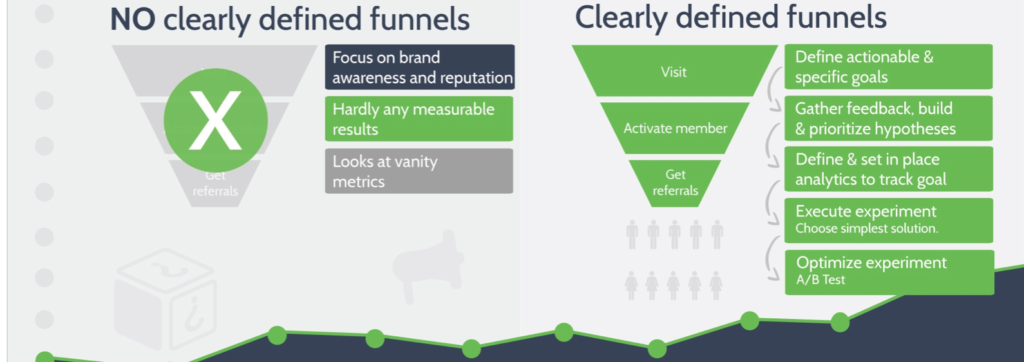 Traditional marketing vs. growthing hacking funnels[/caption]
Traditional marketing vs. growthing hacking funnels[/caption]Understanding the difference between a growth hacker and a marketer can be a bit difficult at first. But once you make this distinction, it becomes a lot easier to define what growth hacking is and how growth hacking can help your company.
2. Notable Growth Hacking Examples
Now that we’ve covered the basics of growth hacking, we’ll cover a few startup growth hacking case studies.
Hopefully, these case studies will help you develop a better understanding of how growth hacking works, thereby making it easier for you to implement growth hacking strategies within your business.
The Dropbox Story
Dropbox is now a household name, but when they were starting out, they faced a lot of competition, and it was hard for them to stand out.
Not to mention an $800 million offer from Steve Jobs to buy them - that Drew Houston (the founder of Dropbox), declined.
They tried many different customer acquisition strategies, but they often found themselves coming up short. For instance, not too long after launching, they tried the obvious approach of using a then-called AdWords marketing campaign (now called Google Ads).
However, that approach didn’t work for them, as the customer acquisition costs were simply too high.
[caption id="" align="aligncenter" width="590"]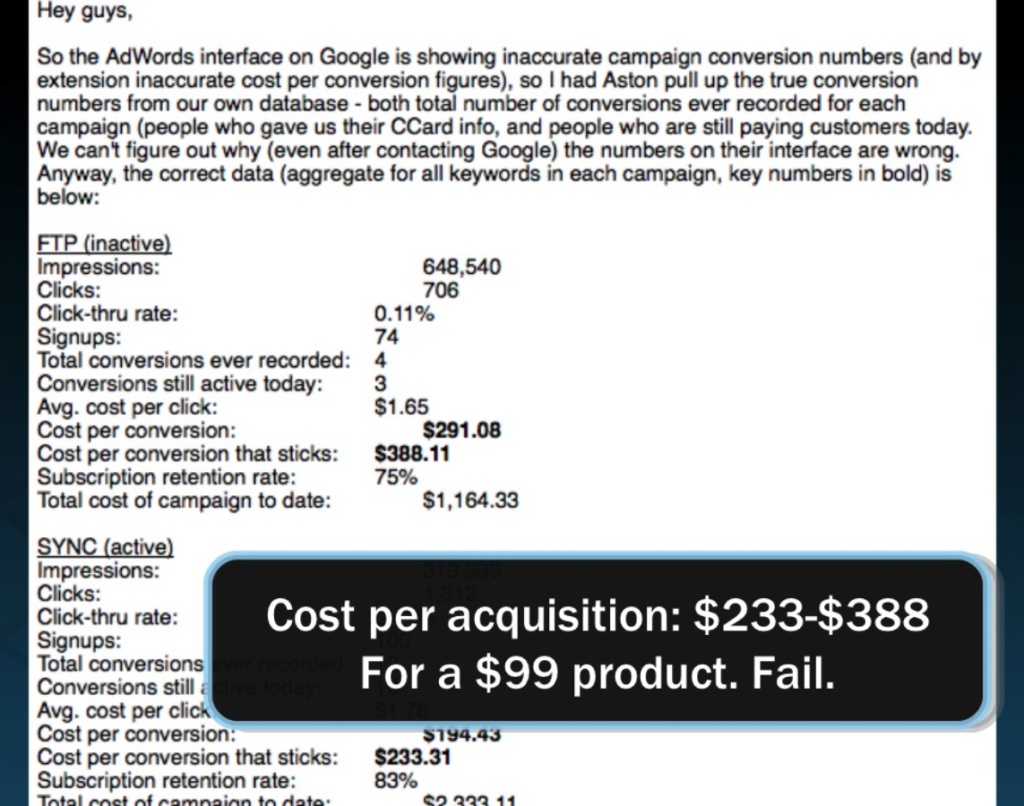 Dropbox customer acquisition strategy
Dropbox customer acquisition strategySource[/caption]
Following this, they went back to the drawing board and tried to figure out what actually led to someone signing up and joining their customer base. After thinking about it, they found that the customer experience typically followed the process below.
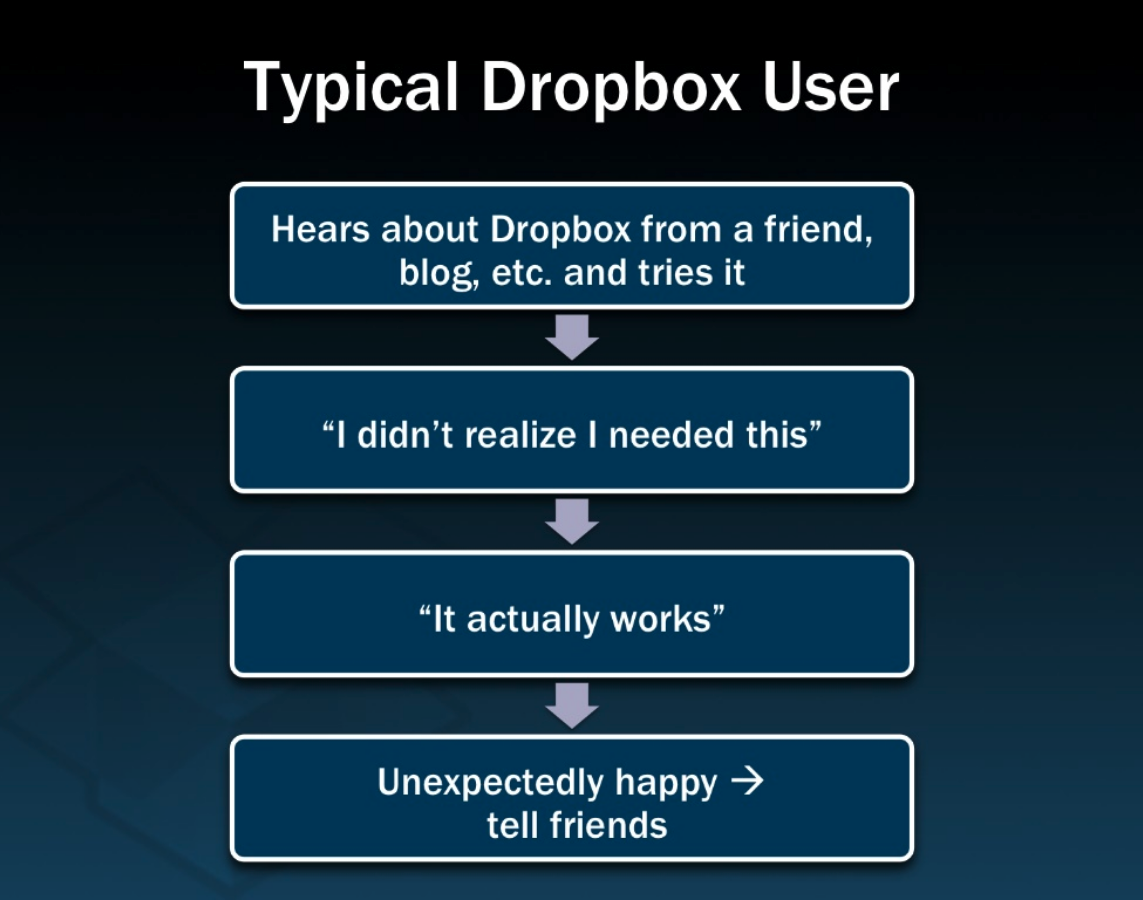
Source[/caption]
Their research showed that word of mouth marketing was one of the best ways for them to acquire customers. Therefore, they went about creating a “growth hack” that allowed them to exploit this marketing channel.
As you read this, notice how a traditional marketer may have stopped as the Google AdWords failed acquisition cost and simply “quit” that marketing channel without digging deeper to understand why that channel wasn’t working.
[caption id="" align="aligncenter" width="590"]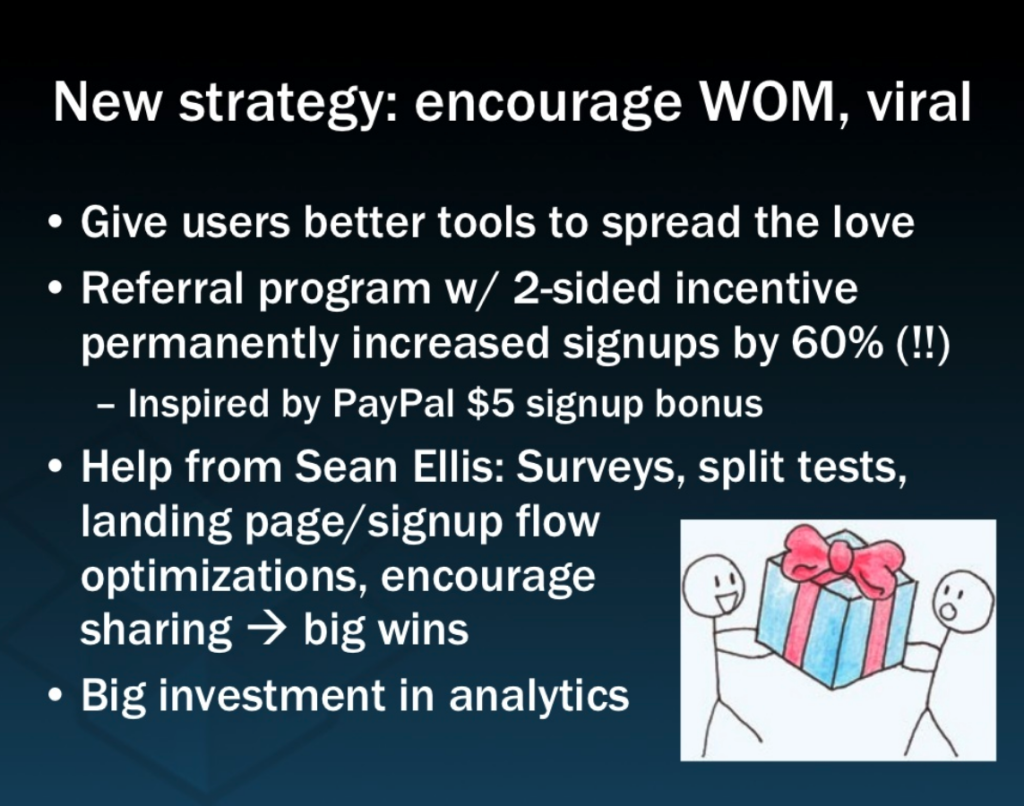
Source[/caption]
The way they did this was by introducing a referral scheme for their product, and this was essentially their growth hack. However, this referral program was special because it included a ‘2-sided incentive.’
This meant that both the referrer and the person using the referral would benefit. In the case of Dropbox, this means that the person sending the referral would get some extra space in their Dropbox account, as would the person opening a new account.
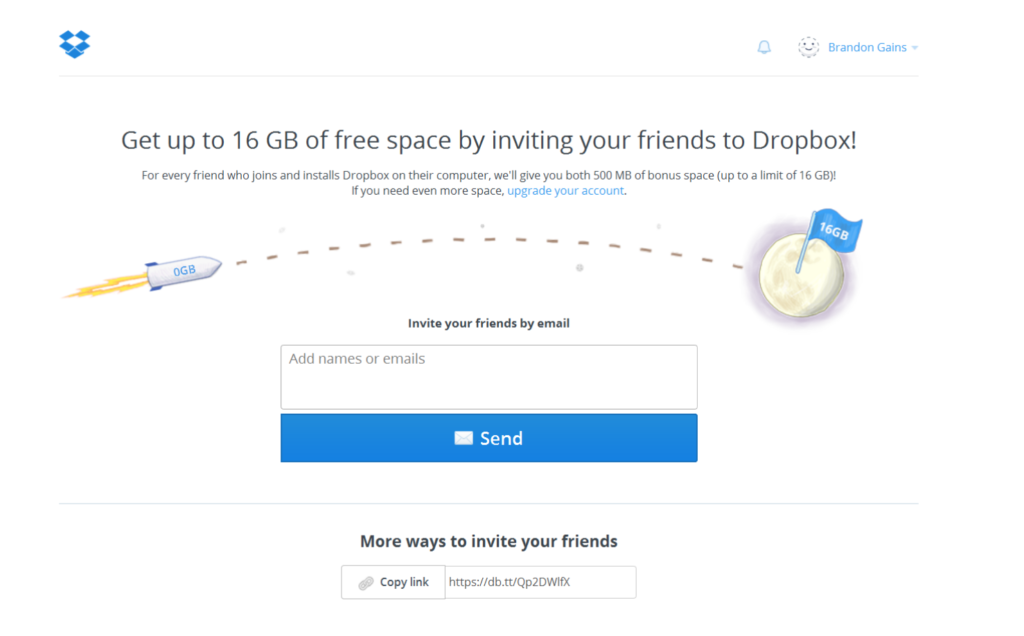
Source[/caption]
Dropbox also figured that if they did some landing page testing, they would be able to optimize the referral and subsequent signup process. This would then allow them to magnify the impact of their referral scheme.
Thus, they split tested the pages that people would see during the referral and signup process. At the end of each a/b test, they would monitor their results to determine whether they should keep a particular change or if they should try something else.
After doing all this, they were able to improve conversion rates, which allowed them to generate more signups from the same number of visitors.
This tactic, combined with the two-sided referral tactic, paid huge dividends. So much so that shortly after implementing these changes, Dropbox generated 2.8 million referral invites in 30 days.
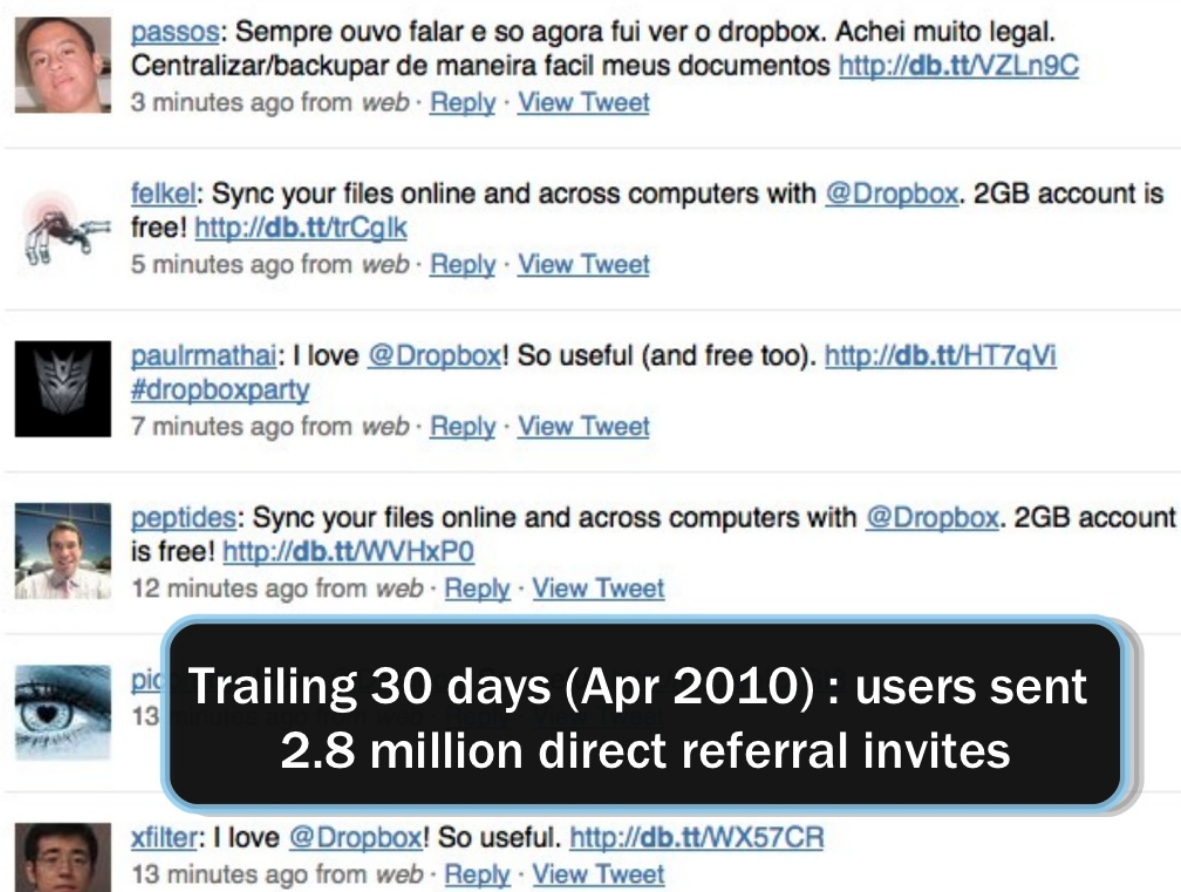
Source[/caption]
The Hotmail Story
Hotmail also managed to experience significant growth in a short period, thanks to growth hacking.
Hotmail did this by including the text ‘Get your free email at Hotmail,’ in the signature of each email. There wasn’t really a highly researched process here, and the marketing team just thought they’d try something creative.
[caption id="" align="aligncenter" width="590"]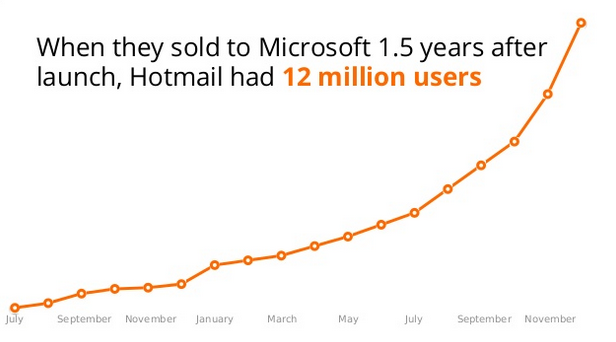
Source[/caption]
This small adjustment produced near-instantaneous results, and after including this text, they generated 1 million new users within six months. Five weeks after the six-month mark, they managed to hit 2 million users.
This amazing growth eventually led to Microsoft acquiring the platform for around $400 million.
The Airbnb Story
Airbnb is another household name that owes a lot of its success to growth hacking.
When Airbnb was starting out, one of their biggest challenges was figuring out how they could get in front of their target market.
For reference, Airbnb’s target market was essentially people that wanted short-term accommodation that wasn’t a hotel.
Based on their research, they found that people who wanted short-term accommodation but didn’t want to stay at a hotel would often use Craigslist to find a suitable place.
Following this, Airbnb had to figure out how they could get their property listings on Craigslist. If they could work this out, their properties would end up in front of their target audience, and this would result in people using the Airbnb service.
So how did Airbnb tackle this issue?
Well, Airbnb created a tool that allowed people to repost their Airbnb listing to Craigslist.
[caption id="" align="aligncenter" width="590"]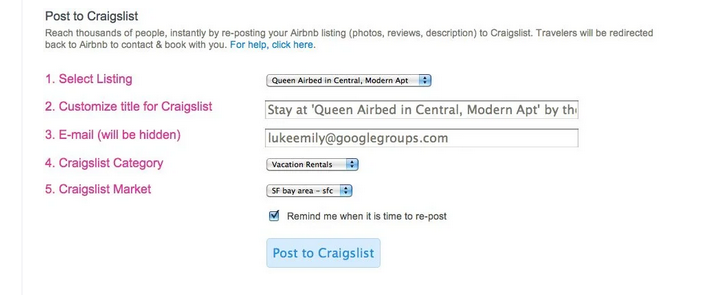
They got people to use this tool by sending out an email marketing campaign that highlighted the benefits of reposting their listing on Craigslist.
[caption id="" align="aligncenter" width="590"]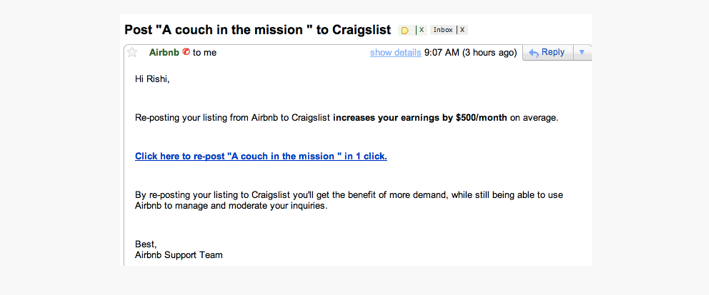
This email was short and to the point, and it explained that people could make more money if they reposted on Craigslist. They further encouraged action by telling users they could repost their property with just ‘1 click.’
This little hack worked, and it allowed them to reach people that were looking for the kinds of properties listed on Airbnb. It worked so well, that after a while, their target audience started to visit Airbnb instead of Craigslist.
3. The Importance of a Good Product
In this section, we’re going to touch on something a lot of people tend to ignore when it comes to growth hacking – the importance of a good product.
If you don’t have a good product, you will experience a ‘high churn rate.’
Meaning simply, that your acquisition efforts might not lead to long and high lifetime values of your customers. You’re essentially, filling a bucket with holes bigger than they should be.
This means the rate at which you’re losing users/customers is greater than the rate at which you’re acquiring them. The chart below does a good job of highlighting how churn rate works.
[caption id="" align="aligncenter" width="590"]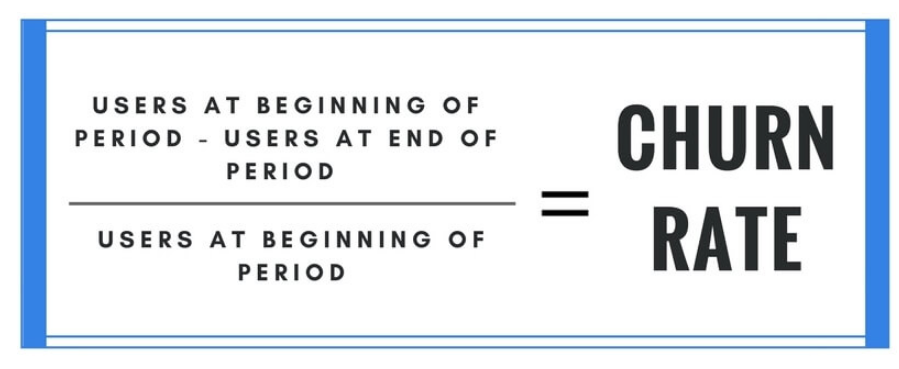
Source[/caption]
If you want to succeed with growth hacking, you need to make sure you have a low churn rate. If you don’t do this, it will be difficult to grow your user base, no matter how good your growth hacking tactics are.
So, how do you know if you have a good product?
Well, when we talk about having a good product, what we’re really talking about is having something that has good ‘product-market fit.’
This means your product does a really good job of meeting the needs of your target audience. If you don’t achieve product-market fit, you will likely join the 42% of companies that failed because they lacked product-market fit.
[caption id="" align="aligncenter" width="590"]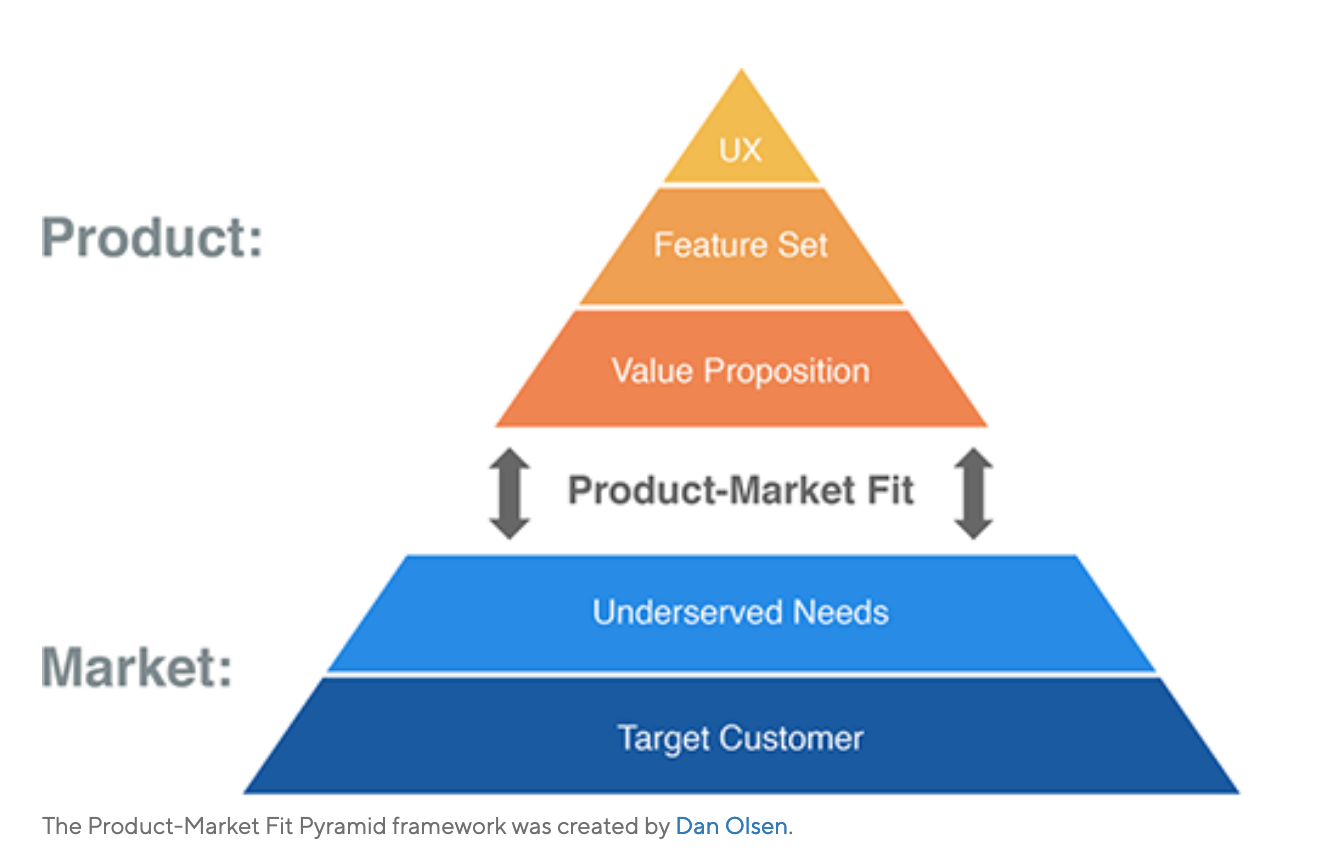
Source[/caption]
So, how do you achieve good product-market fit?
To begin with, you need to decide who your target audience is and how you’d like to help them.
You’d then need to survey your target audience to determine how you can best meet their needs. You can then use this information to help you build a product your target audience will actually want to use.
Once you’ve launched your product, you’ll need to survey your audience again, to determine whether you’ve done what you set out to do.
One way you can do this is by collecting feedback from people that decided to abandon the product.
If you reach out to past users, they’ll tell you what they didn’t like about your product, and you can then use this information to improve your product. If you do this enough, you should eventually end up with a product that your target audience will love.
How Do You Know If You’ve Achieved Product-Market Fit?
The easiest way to determine if you’ve achieved product-market fit is by asking users how disappointed they’d be if they couldn’t use your product again.
If at least 40% of the people would feel ‘very disappointed’ if they couldn’t use your product again, you have product-market fit.
According to one survey, Slack is an example of a product that has achieved this.
[caption id="" align="aligncenter" width="590"]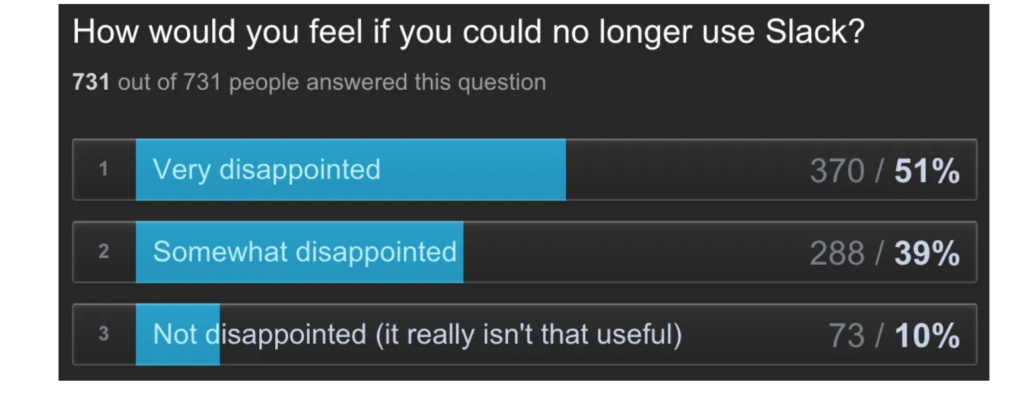
Source[/caption]
After all, if you look at the chart above, you’ll find that 51% of people would be ‘very disappointed’ if they couldn’t use the product again, and this is well within the 40% range mentioned earlier.
4. Decide On Your Companies “North Star”
Since growth hacking works best when the entire company understands and “buys in” to growth hacking, you need to make sure your company has a “North Star” = a single metric, that if improved, makes everything better, easier, etc.
For example, Uber’s “North Star” is “trips completed”.
This North Star example shows that both riders and drivers are getting value from the Uber platform, and revenue grows as well.
Facebook’s early North Star was “the number of Facebook users adding seven friends in the first 10 days”.
The more Facebook users that did that, the more the retention of using Facebook would increase, which as you can imagine, led to more time on the Facebook platform which led to more ad impressions, which led to more ad dollars spent by advertisers on the Facebook platform.
With a North Star metric, everyone wins - the company and the customer.
For us at KlientBoost, our North Star metric is “number of quarterly goals hit”.
We set quarterly goals for our clients and the higher the number of goals hit, the more successful we’ll be as a company - clients stick around longer, clients become happier, our team wins more and has better relationships with their clients too.
5. Growth Hacking Tactics
Now that we’ve covered the fundamentals of having a good product, we’ll now check out some of the more popular growth hacking tactics.
Note that you don’t have to use a growth hacking tactic in isolation, and you’ll often get better results if you combine different tactics.
Growth Hacking Tactic #1: Use Channels Your Competitors Aren’t Using
Research shows that around 54% of marketers use 3-4 marketing channels.
This number is surprisingly low when you consider there are at least 51 marketing channels to choose from.
Thus, if your competitors are only using 3-4 marketing channels, you can overtake them by using the marketing channels they’re ignoring. That’s because you’ll be able to capture a greater portion of your audience’s attention.
For instance, suppose nobody in your industry is using YouTube as a marketing channel.
If you focus on YouTube, it might be easier for you to reach your target audience. Many of your competitors might not have a YouTube presence, and so people interested in your niche might consume your content as they have no alternative.
Now, for this approach to work, you will need to consider some of the best practices within your industry, regarding client acquisition.
You will then need to consider which approaches aren’t included within these best practices. If you do that, you should be able to identify some marketing channels that you can exploit.
Growth Hacking Tactic #2: Focus on Automation
According to one study, companies that use marketing automation are able to achieve a 451% increase in marketing qualified leads.
Following this, automation can be a great growth hacking tactic, especially when it is combined with some of the other tactics mentioned in this post.
Automation simply refers to creating an automated system that will ‘nudge’ your target audience into the next stage of the buyer’s journey.
[caption id="" align="aligncenter" width="590"]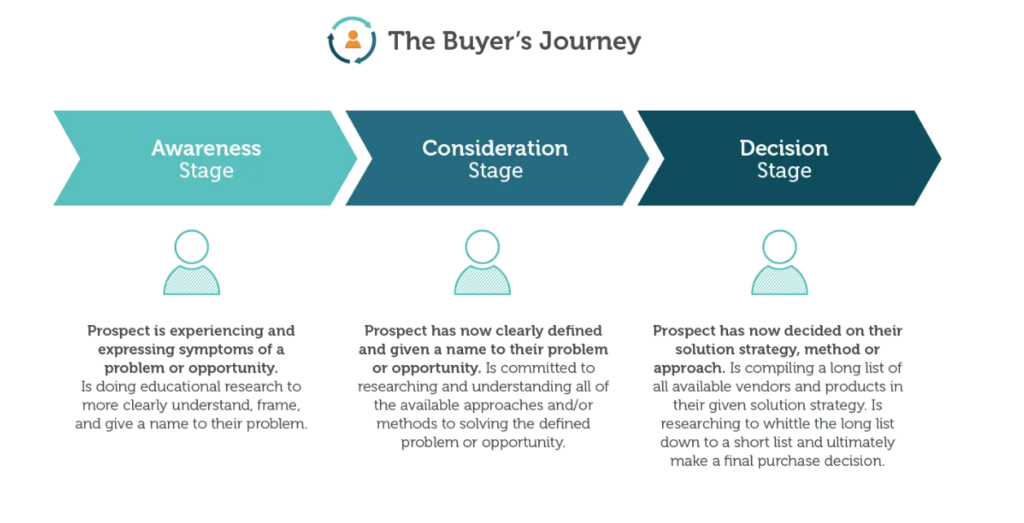
Source[/caption]
So, suppose you use webinars to get people to move from the consideration stage to the decision stage.
You might set up a system that automatically sends people an SMS reminder before a webinar is going to launch. This tactic can work especially well since SMS messages typically have a 98% open rate.
Thus, if you send people an SMS, they will likely open it and be reminded of your webinar. As a result, more people will turn up to the webinar, and this will result in more people moving to the decision stage, which will then lead to more conversions later on.
Even if you create email reminders too - that can be enough to outperform your previous webinar attendance rate.
If you want to make the most out of automations, you need to identify each of the stages people will go through before they become a customer.
Once you’ve done this, you will then need to create specific automations for each critical stage of the journey. In doing so, you will be able to nudge people along the buyer’s journey, and this will result in more conversions.
If you want to create an automation, you might need to use a special purpose-built tool. However, a lot of the time, you might be able to create something with the help of a generalist automation tool such as Zapier.
Growth Hacking Tactic #3: Create a Free Tool
Creating a free tool is another growth hack that you may want to think about using.
In addition to bringing value to potential customers, it’s also a massive linkable asset that can drive backlinks and increase your SEO strength (remember how I mentioned many marketing channels/tactics shouldn’t live in isolation?).
One of the reasons a free tool works as a growth hack is because it allows you to draw a large amount of attention. That’s because people will need to go to your website to use this free tool. Once you have this attention, you can then direct people towards your paid offering.
This approach can be especially helpful if you don’t have a lot of money to spend on customer acquisition.
A good example of a free tool working as a growth hacking tactic is the ‘HubSpot Website Grader.’
[caption id="" align="aligncenter" width="590"]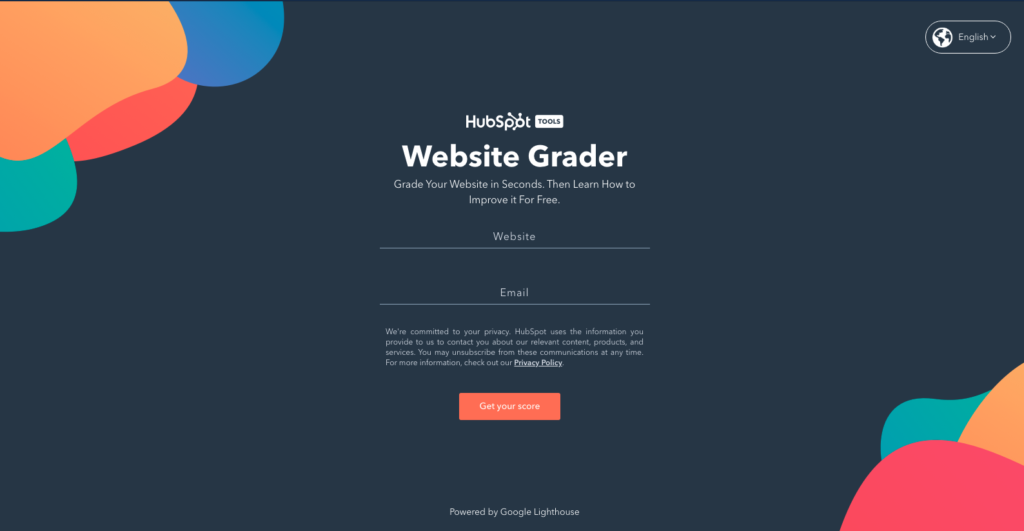
The tool worked so well that one of HubSpot's founders has said the following about the tool:
[caption id="" align="aligncenter" width="590"]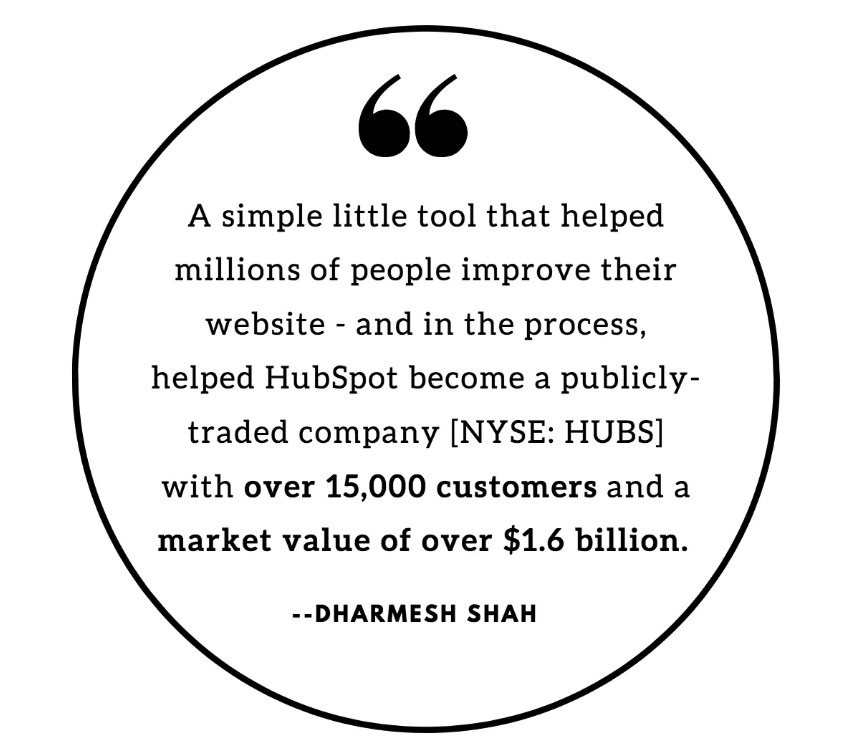
When you’re looking to create a tool, there are generally two ways you can go about things.
The first approach is to simply ask your target market about some of the things they’re struggling with. You might then decide to create a free tool around one of the problems you’ve identified.
For instance, suppose your audience is made up of content marketers.
Research shows that 59% of content marketers don’t have a documented content marketing strategy. Thus, you could cater to this audience by creating a tool that helps content marketers develop a documented content marketing strategy.
Another way you can identify ‘free tool’ ideas is by reviewing the products your target market is already using.
In doing so, you can identify some of the features within these tools that are popular amongst your target audience. You can then create a free tool, based on one of these popular features.
For example, if you survey your target audience, you might find that they use a lot of SEO tools.
If you dig a little deeper, you might find that your target audience uses SEO tools to check their backlinks. Following this, you could offer a free backlink checker, and this will then allow you to get the attention of your target audience.
A relevant example here is Ahrefs, of whom has created a free backlink checker for people interested in SEO.
[caption id="" align="aligncenter" width="590"]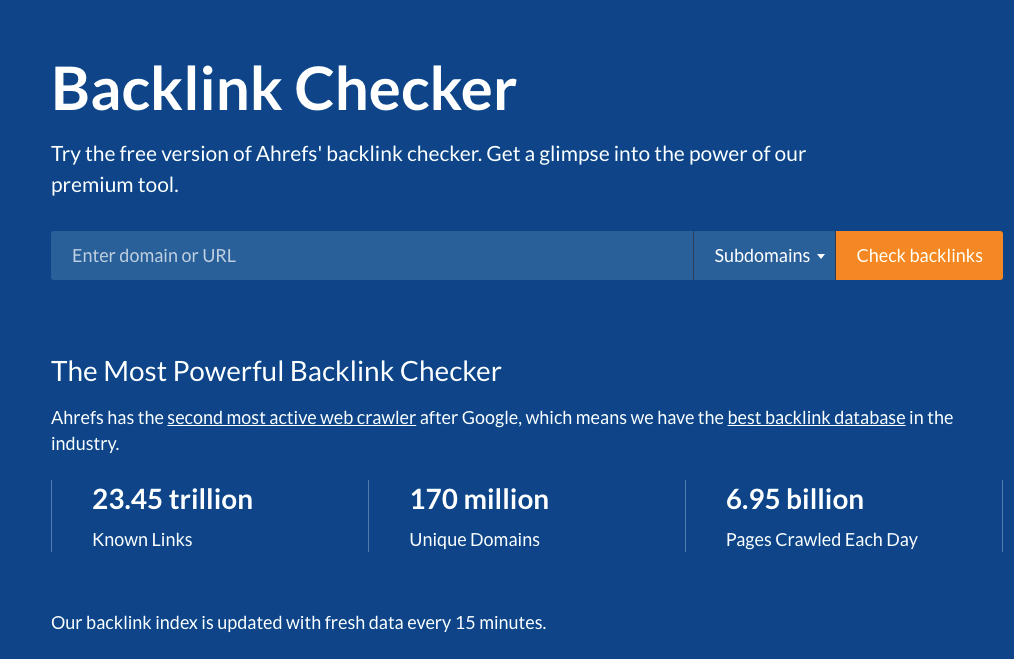
Source[/caption]
This tool also works well as a growth hack because people will want to use the main tool when they discover the quality of the data outputted by this tool.
Growth Hacking Tactic #4: Incentivize Critical Events
For the most part, a critical event is something that results in someone learning about and then signing up for your product.
If we take the Dropbox example from earlier, a critical event is when someone tells another person about Dropbox. Dropbox identified that event as a key driver of growth, and when they oriented their growth strategy around that event, they managed to increase signups dramatically.
Following this, you need to identify how most of your existing customers actually became customers. If you can do that, you can then go about incentivizing the specific events that typically transform a stranger into a customer.
So, one critical event you may want to incentivize is getting people to talk about the product on social media. This can be especially powerful when you consider that 43% of consumers are more likely to buy a new product if they learn about it from friends on social media.
Another critical event you might want to incentivize is getting someone to refer a product to a friend.
Providing incentives in exchange for a referral can be incredibly powerful since 50% of people are more likely to provide a referral if there’s an incentive on offer.
Incentivizing critical events works as a growth hacking tactic because people will often do what you tell them to do, provided there is a suitable incentive. For instance, the chart below highlights some of the things people would be willing to do to earn a reward.
[caption id="" align="aligncenter" width="590"]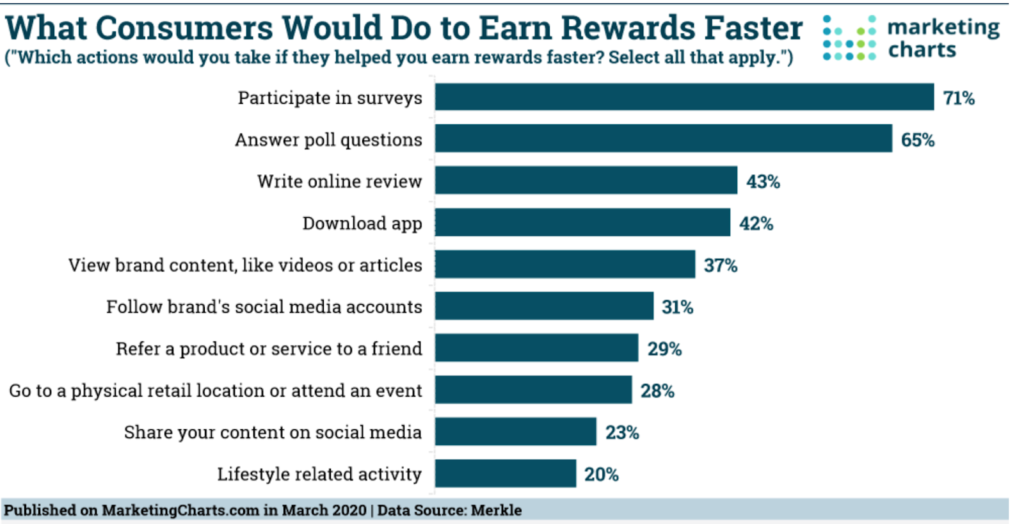
Source[/caption]
On a side note, this chart can also give you a baseline you can aim for when trying to incentivize a particular action. For instance, according to the chart, if you want people to share your content on social media, you can expect at least 23% of people to do so, in exchange for a reward.
In any case, to help you understand how you might incentivize a critical event, let’s go through an example that highlights how you can get people to post about a product on social media.
Suppose you have a product that allows people to improve a particular metric within their business.
To improve your social media presence, you might create a feature within your product that allows people to share their improvements on social media.
You might incentivize the use of this feature by providing people with some kind of ‘free’ bonus if they share their improvements. If people get access to this freebie, as a result of sharing the metric on social media, they will likely share their ‘improvements’ on social media.
This will then generate awareness of your product, which will lead to additional user signups.
When these people learn about the benefit of posting their improvements on social media, they will do the same thing, and this will lead to further signups. This cycle will then repeat itself, and you should hopefully end up with a larger user base.
This self-reinforcing cycle is often known as a ‘viral loop,’ simply because the incentives cause more and more people to take action.
[caption id="" align="aligncenter" width="590"]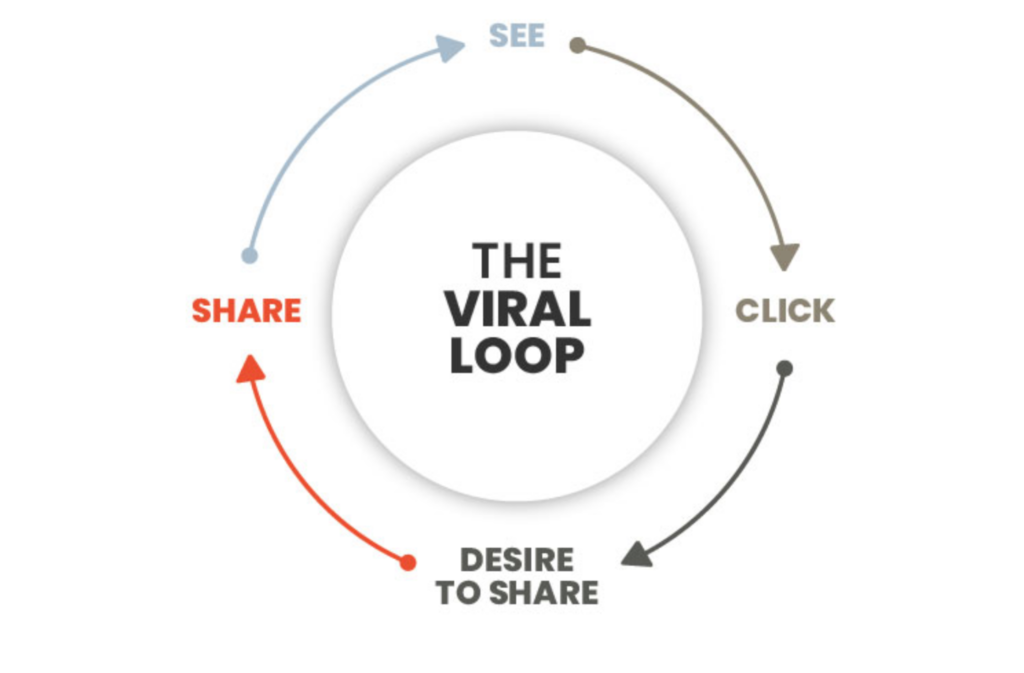
Source[/caption]
The graphic above does a good job of showing how a viral loop works. Viral loops can be incredibly powerful, and one SaaS company, known as Infinity, managed to generate 2500 early adopters using this concept.
As mentioned earlier, if you want people to move through the loop, you just need to provide them with the right incentives.
Of course, all of this is very “over-simplified” but the goal with these examples is to show you that growth hacks can happen at any stage of the customer’s lifecycle from start to finish.
Don’t just stop at “acquisition”/
Growth Hacking Tactic #5: Build a Community
Building a community is one of the best low-cost growth hacks you can use within your business. One of the main reasons for this is that a community can help you achieve many goals.
For instance, 66% of businesses use community engagement to help them during the product research phase.
Thus, if you join these businesses by using a community to help you with product development, it will be easier for you to achieve product-market fit. This will then ensure you achieve a low churn rate when you finally start promoting your product.
Furthermore, data shows that 53% of Americans who belong to a brand community, are loyal to that brand. Following this, you can use a community to create loyal brand advocates that will help you trigger viral loops on social media.
So, with all that said, how do you attract members for a community?
Well, when you’re trying to build a community, there are typically two paths you can go down.
The first path is to essentially create a waiting list for your product, and Robinhood is a good example of a company that did this.
[caption id="" align="aligncenter" width="590"]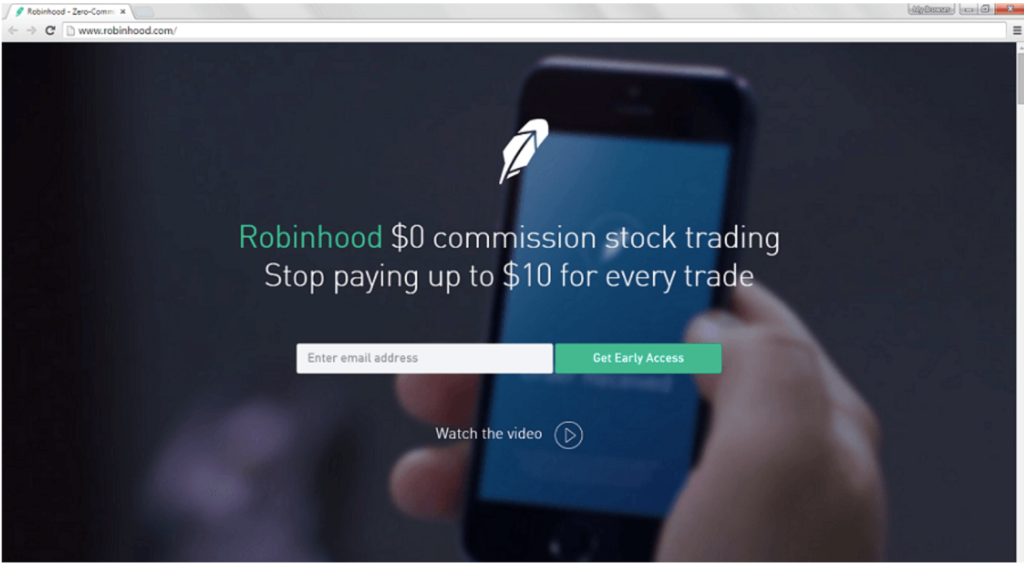
Source[/caption]
If you do things this way, you will send people to a landing page that’ll sell them on the promise of the product.
People will then sign up, and you can subsequently communicate with them while you’re developing the product. You can even give them access to a beta, and you can use their feedback to improve the product.
This approach also works really well because it tends to generate buzz for your product. Your waiting list becomes like an exclusive VIP list, and people will begin to sign up to your list just so that they can get closer to the action.
The other option is to create a community on Slack or Facebook, that’s designed for your target audience.
For instance, if you cater to accountants, you might create a Facebook Group that’s designed specifically for accountants. Within this Facebook Group, you might give people advice on how they can use digital marketing to grow their business.
If you do this, you will build rapport with the people that are in the Facebook Group. As a result, they will be willing to engage with your product when you get around to posting it in the group.
Just keep in mind that you need to set some specific rules:
- Engagement is vital. If you don’t have someone dedicated to the community to track and further engagement, then it might fail.
- Don’t allow them to self promote anything (this is one of the biggest reasons how communities get toxic and become less valuable)
Growth Hacking Tactic #6: Become Invite Only
Another growth hack you may want to consider is making your product ‘invite-only.’
This approach is similar to the waiting list example from above, but in this case, the product is actually working and available for people to use. The only difference is that they will need an invitation before they can access the product.
Again, this makes people feel like they belong to a special club, and it can create a significant buzz around your offering.
Gmail is an example of a product that managed to build a lot of buzz by adopting an invite-only approach.
[caption id="" align="aligncenter" width="590"]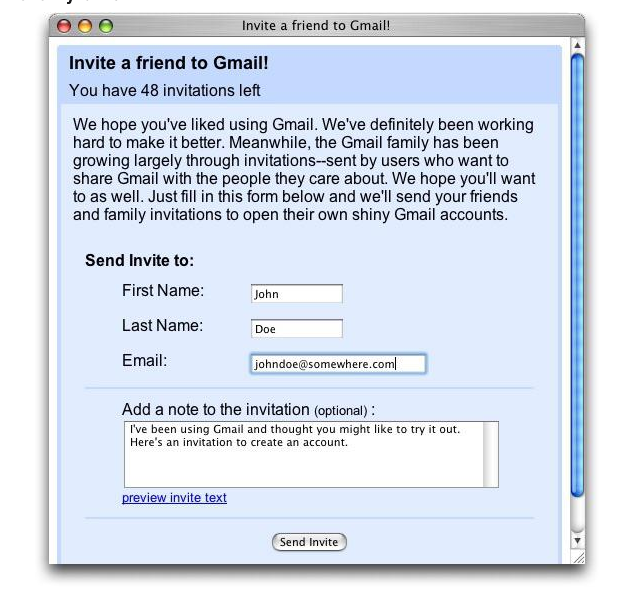
Source[/caption]
Google managed to build so much buzz around Gmail, that people would pay around $150 on eBay for an invite to the platform. The fact that people were willing to bid so much for an account created lots of publicity, which helped the platform achieve dramatic growth.
If you’re going to use the invitation model for your startup, you might be able to ramp things up by creating some kind of ‘raffle-ticket system.’ With this system, it might be the case that someone is more likely to get an invite if they have a lot of ‘tickets.’
Though they didn’t have an invite system like Gmail, Robinhood is an example of a company that used this kind of approach.
[caption id="" align="aligncenter" width="590"]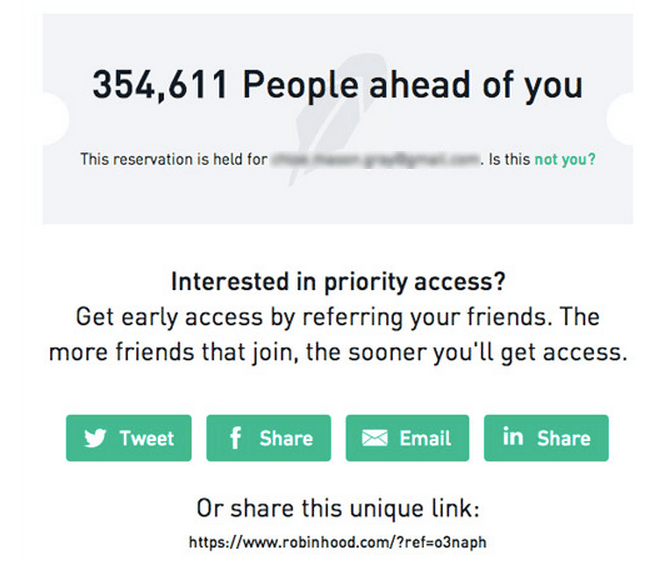
Source[/caption]
As mentioned earlier, Robinhood had a waiting list that people had to join if they wanted to use the product. However, Robinhood gave people the chance to move up the waiting list if they got other people to sign up to the waiting list.
This lead to more publicity surrounding the product, which subsequently boosted the user base. If you apply this kind of growth hacking process to an invite-only model, you will likely experience similar results.
If you remember Mailbox, they did this too - and I distinctly remember how excited I was to get access and how sad I was when Dropbox acquired them for $100 million and later killed the product entirely.
This article is coming full circle, isn’t it?
Growth Hacking Tactic #7: Objectively Measure The “Bar”
There’s no doubt that you’ll use the same marketing channels as your competitors.
But how do you know if what you’re doing is objectively better than them?
A few ways we here at KlientBoost have been able to outperform much older marketing agencies is by looking at “how” they do their marketing.
This helped us set a new “marketing bar” - for example:
1) Blog post we publish MUST have more examples, more data, more tactics, and usually, higher word count
2) Podcast episodes we publish MUST have more expert guests (usually three guests on average) and more actionable tactics
3) YouTube videos we publish MUST be shorter in time and be more fun to watch (animations)
By measuring the “bar” - you’re able to pick a part how your marketing output is measurably better than your competitor’s.
Growth Hacking Tactic #8: Look At Differentiation as a Strategy
In addition to having a strong product, it’s important you also look at how your brand and customer experience is different and objectively better than the competition.
If you’re not focusing on that at the same time as you’re “hacking growth” then you may be selling your performance potential short.
[caption id="" align="aligncenter" width="590"]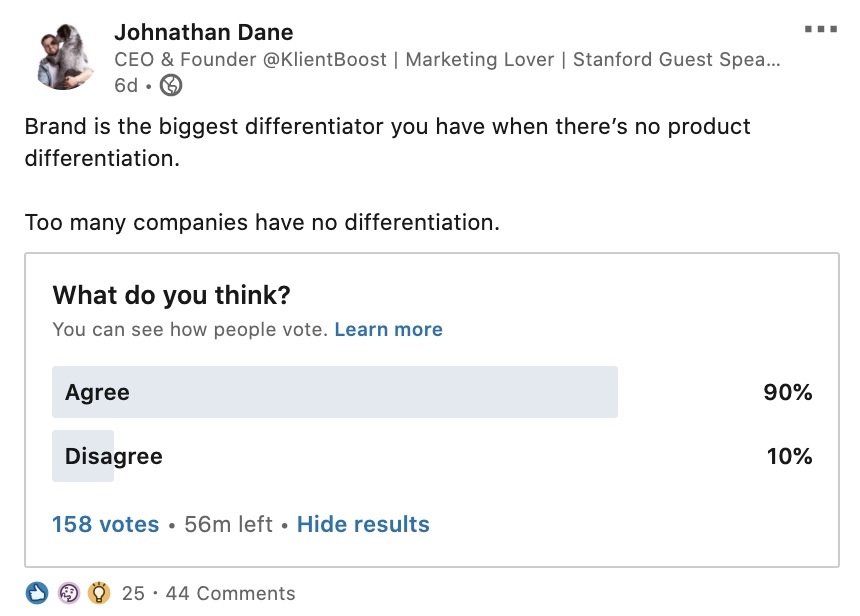
source[/caption]
If your brand is stronger and your differentiations are clear, it makes everything else easier for you.
Similar to how when you raise your conversion rates, all your other marketing efforts benefit.
One of my favorite marketing minds, Peep Laja, dissected differentiation strategy here - and it’s an amazing read.
So What’s Next?
You should now understand how growth hacking works and how you can use this approach to grow your business.
If your initial attempts at growth hacking fail, don’t be too hard on yourself.
Remember, success with growth hacking often comes down to trying out a bunch of different marketing tactics while maintaining a scientific approach. Check out what other people are testing out and see what tests you can implement for your growth needs.
And if your initial tactic fails, all you need to do is come up with a new idea that you can test.
You literally only need a single win to warrant the continuance of growth hacking.
It’s also worth noting that you don’t have to rely on digital marketing tactics, as it’s often a good idea to experiment with offline tactics too.
And remember, review every part of your business to see what levers can be utilized for growth.
It’s hard to say how many experiments you will need to run until you have a viable growth hacking strategy.
But if you keep pushing forward, you should eventually come across a growth hacking technique that’ll allow you to achieve that coveted ‘hockey stick’ growth.
Happy hacking!
